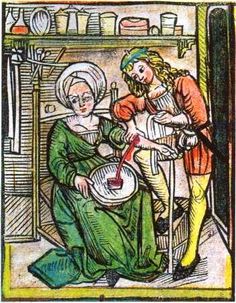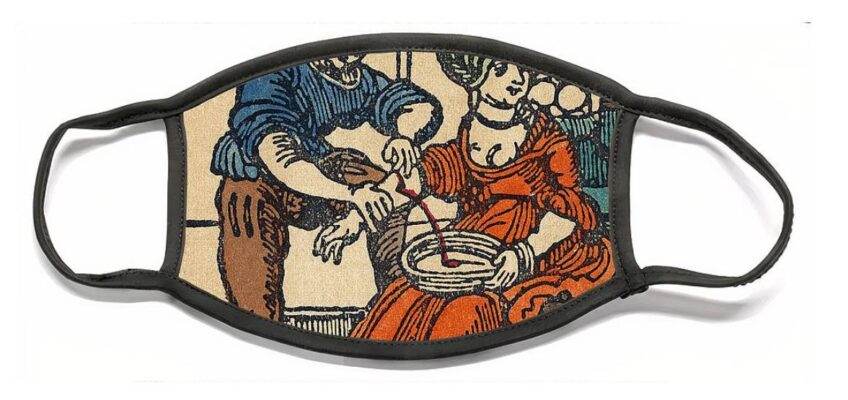Bloodletting?
Why bloodletting?
According to Hildegard von Bingen, every adult should have bloodletting performed regularly and as a preventive measure for general cleaning. Because harmful waste products (“black bile and bad juices”) often lead to a wide variety of acute or chronic diseases. As part of a comprehensive therapy, bloodletting can even be carried out every two months.
Bloodletting: Causae et Curae
In her book “Causae et Curae” – “About the causes and treatment of the diseases” she left us a wealth of information on this important “aderlass” cleaning and therapeutic process.
This is how she writes:
“When the vessels of a human being are filled with blood, they must be cleaned by an incision of the harmful mucus and putrefactive substances supplied by digestion.”
Blood-letting or “saignée” effectively lowers blood pressure. However, not only volume and harmful substances are removed from the body, but the blood formation also stimulates the metabolism with hormone regulation, inflammation inhibition and pain reduction.
Would you take the cure?

Medieval Bloodletting
Bloodletting was a Medieval practice that involved intentionally drawing blood from a patient’s body in order to restore what was believed to be a balance of bodily humors and treat various ailments. It was based on the ancient Greek concept of humoral theory, which proposed that the human body was governed by four main humors—blood, phlegm, yellow bile, and black bile—and imbalances among these humors were thought to cause illnesses.
Here are the general steps involved in the practice of medieval bloodletting:
- Diagnosis: Physicians or healers would examine the patient’s symptoms, often taking into account factors such as the patient’s overall health, appearance, and the nature of their complaints. Based on these observations, they would determine which humor was believed to be in excess and causing the illness.
- Choice of Method: Bloodletting could be performed using various methods, each targeting different parts of the body. The choice of method depended on the patient’s condition and the specific humor believed to be imbalanced.
- Selection of Tools: Bloodletting required specific tools. Common instruments included lancets, which were small, sharp blades, and cupping vessels made of materials like glass or horn. The choice of instrument also depended on the method chosen.
- Preparation of the Patient: Before the procedure, patients might be advised to prepare by fasting, avoiding certain foods, or undergoing other rituals. This was thought to help enhance the effectiveness of bloodletting.
- Site Selection: Depending on the illness and the humor believed to be imbalanced, a suitable site for bloodletting was selected. Common sites included veins in the arms, legs, and neck, but sometimes more specific locations were chosen based on the humoral theory.
- Incision or Cupping: If bloodletting involved making an incision, the physician would use a lancet to puncture the chosen vein. Alternatively, in cupping, a cupping vessel was placed on the skin, and a vacuum was created inside it, drawing blood to the surface of the skin through suction.
- Blood Removal: Once the vein was punctured or blood was drawn to the surface, the blood was allowed to flow into a container or onto the ground. The amount of blood taken was often carefully measured and controlled based on the patient’s condition and the healer’s judgment.
- Monitoring and Aftercare: After the blood was drawn, the patient’s condition was observed. The healing process was believed to begin as the body worked to restore the balance of humors. Patients were usually advised to rest, and sometimes herbal remedies were prescribed to aid in the recovery.
- Repeat Procedures: In some cases, bloodletting was performed multiple times over a period of days or weeks. The frequency and volume of bloodletting sessions varied depending on the illness and the beliefs of the healer.
It’s important to note that while bloodletting was a widely practiced medical treatment during the medieval period, it is now considered a harmful and ineffective practice by modern medical standards. The development of modern medical knowledge and understanding of human physiology has led to the abandonment of bloodletting in favor of evidence-based medical practices.
Learn more: http://naturheilpraxis-vorgebirge.de/aderlass/
